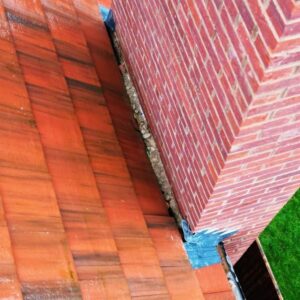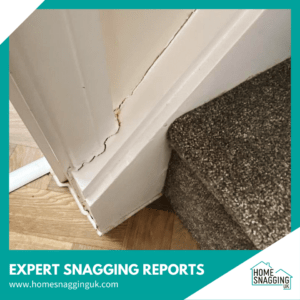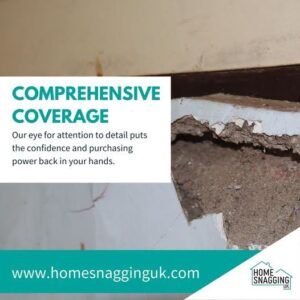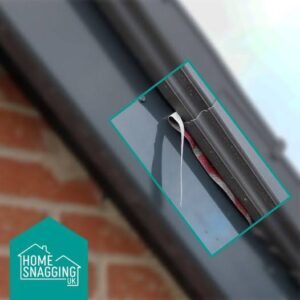
Avoid Costly Mistakes: Snagging & Home Inspections in Yorkshire
Avoid Costly Mistakes: The Importance of Home Inspections in Yorkshire BookOnline Now When purchasing a newly built home, it is
Latest News

The Snagging Process: A Critical Overview
In the UK, the journey to homeownership is marked by excitement and anticipation. However, for many new homeowners, this journey can also bring unexpected challenges, particularly when it comes to snags in new build properties. Snagging, a term that has become all too familiar in the realm of UK real estate, refers to the process of identifying and listing defects or issues in new homes. These defects, ranging from minor cosmetic blemishes to major structural faults, are surprisingly common, given the rapid pace of construction and the pressure to meet the increasing demand for housing.
The Importance of Professional Inspections
The significance of snagging inspections cannot be overstated. They serve as a critical tool for homeowners to ensure that their new property meets the high standards they expect and are entitled to. Despite properties needing to pass building regulations inspections and come with structural warranties, it’s not uncommon for new homes to harbour a host of defects—some of which may not be immediately evident. Professional snagging inspections delve deep, examining every aspect of a property, from the integrity of brickwork and the functionality of electrical systems to the finish of paintwork and the installation of fixtures. These comprehensive evaluations are designed to uncover any issues that might have been overlooked or arisen during the construction process.
Securing Peace of Mind
Engaging a professional snagging service offers homeowners peace of mind. It ensures that any identified snags are addressed and rectified by the developer before the sale is completed or, in some cases, after the homeowner has moved in. This step is crucial for safeguarding the investment in a new home and ensuring that the property not only provides a safe and secure environment but also lives up to the quality and standards promised by developers.
The Growing Need for Snagging Inspections
As the UK continues to see a surge in new housing developments, the role of snagging inspections has never been more important. They stand at the frontline of consumer protection in the real estate market, ensuring that new homeowners are not left to deal with the consequences of construction oversights. For anyone stepping into the world of new homeownership, understanding the importance of snagging is the first step towards ensuring their dream home is as flawless in reality as it is in their aspirations.
Navigating the world of new home ownership often involves understanding the nuances of construction quality, particularly when it comes to identifying snags. These issues, which can range from superficial to structural, play a significant role in the overall satisfaction and safety of a homeowner. To fully grasp the scope and impact of these defects, it’s crucial to differentiate between two primary categories: major and minor snags.
Major Snags: A Closer Look at Structural Concerns
Major snags are significant issues that directly affect a building’s structural integrity, safety, or overall functionality. These are not mere inconveniences but serious defects that can pose immediate risks to inhabitants or entail substantial repair costs if not addressed promptly. Examples of major snags include but are not limited to:
These types of snags require urgent attention from developers or builders to ensure the property is safe, secure, and functional for the new homeowners. The potential for considerable repair costs and the safety hazards associated with major snags underscore the importance of early detection through professional snagging inspections.
Minor Snags: Addressing Cosmetic and Finishing Touches
In contrast, minor snags generally involve cosmetic issues that, while not impacting the building’s structural integrity or safety, can affect the overall finish and satisfaction of the homeowner. These defects, often surface-level, can detract from the aesthetic appeal of a new home and may include:
Although less critical than major snags, addressing minor issues is still important for achieving the desired quality and finish of a new home. Homeowners often expect a new build to be near-perfect, and minor snags, if left unattended, can mar the overall satisfaction and pride in one’s home.
The Balance Between Aesthetics and Functionality
Understanding the differences between major and minor snags is pivotal for homeowners to prioritise issues for rectification and communicate effectively with builders or developers. While major snags must be addressed to ensure the safety and functionality of the home, minor snags play a crucial role in fulfilling the homeowner’s vision of a flawless property. Through comprehensive snagging inspections, homeowners can identify and rectify both types of issues, ensuring their new home not only meets but exceeds their expectations for quality, safety, and comfort.

In the landscape of new home ownership within the UK, snagging inspections emerge as an indispensable phase of the journey, ensuring that one’s investment is both secure and aligned with expectations of quality. The process of snagging is not merely about ticking off a checklist; it is an in-depth examination designed to safeguard the homeowner’s interests by identifying both major and minor defects that can range from structural to cosmetic issues.
Unveiling the Hidden and the Obvious
The primary purpose of a snagging inspection is to unveil defects that may not be immediately apparent to the untrained eye. While some issues, such as cosmetic snags, are easily noticed, others, especially those related to structural integrity or electrical and plumbing systems, require a keen, experienced eye. Professional inspections play a pivotal role in uncovering a wide array of issues, ensuring that the property adheres to the high standards promised by developers and meets the rightful expectations of quality from homeowners.
Professional Insight: Beyond the Surface
Engaging a professional snagging company brings a layer of expertise and insight that is critical for a thorough evaluation. These professionals are not only equipped with the technical know-how but also possess an understanding of building codes, regulations, and standards that new constructions must meet. Their assessments provide a comprehensive overview of the property’s condition, covering everything from the foundational elements to the finishing touches. This level of scrutiny ensures that both overt and subtle defects are identified, allowing for a clear and actionable snagging list to be compiled.
Ensuring Quality and Accountability
The role of snagging inspections transcends the mere identification of issues; it serves as a mechanism for accountability, compelling builders and developers to rectify identified problems. This process is crucial in ensuring that homes are delivered at the promised quality standard, free from defects that could compromise safety, functionality, or aesthetics. It provides homeowners with leverage, ensuring that their concerns are addressed before finalising the purchase, thereby protecting their investment and ensuring their peace of mind.
A Proactive Approach to Homeownership
Furthermore, snagging inspections embody a proactive approach to homeownership. By identifying and addressing issues early, homeowners can avoid the inconvenience and cost associated with rectifying problems post-move-in. This foresight not only enhances the overall quality of the living environment but also contributes to the property’s long-term value and sustainability.
In the pursuit of perfection within new UK homes, snagging inspections reveal a variety of common defects that, while often minor, can collectively impact the overall satisfaction of homeowners. These defects range from the superficial to the more severe, highlighting the necessity of comprehensive inspections to ensure the highest standards of quality. Here, we explore some of the most prevalent snags identified during these critical evaluations.
Faulty Window and Door Installations
One of the most frequently encountered issues in new homes involves windows and doors. This includes problems such as improper fitting, which can lead to drafts, reduced energy efficiency, and even security vulnerabilities. Faulty installations may also manifest as difficulty in opening or closing windows and doors, or noticeable gaps that compromise the insulation of the property.
Chipped Paintwork and Imperfect Finishes
The aesthetic appeal of a new home can be significantly marred by chipped paintwork and imperfect finishes. These issues, while not impacting the structural integrity of the property, detract from the visual quality and can be indicative of rushed or careless workmanship. Attention to detail in paint finishes, plaster smoothness, and the overall quality of decorative touches is essential for meeting homeowner expectations.
Leaking Pipes and Plumbing Issues
Plumbing defects, including leaking pipes, are not only common but can also lead to more serious issues if not promptly addressed. These leaks can cause water damage, mould growth, and can even affect the structural integrity of the home over time. Identifying and rectifying these issues early is crucial to prevent long-term damage and maintain the functionality of the home’s plumbing system.
Electrical Problems
Electrical issues, ranging from incorrectly wired outlets to malfunctioning lighting fixtures, pose not only an inconvenience but also a safety risk. Ensuring that all electrical installations comply with safety standards and function as intended is a key aspect of snagging inspections.
Heating, Ventilation, and Air Conditioning (HVAC) Concerns
Properly functioning HVAC systems are vital for comfort and energy efficiency. Common snags include poorly installed units, ineffective heating or cooling, and issues with insulation that can lead to uneven temperatures throughout the home. These problems, if left unchecked, can significantly impact the livability and energy consumption of the property.
Structural Defects
Though less common than cosmetic issues, structural defects such as cracks in walls or foundations, roof issues, and problems with load-bearing elements are among the most serious snags. These defects not only affect the safety and durability of the home but can also be the most costly to repair.
Cosmetic Blemishes
Minor cosmetic blemishes, including scuffs on walls, uneven tile work, and poorly fitted trim or mouldings, while not detrimental to the home’s functionality, can diminish the perceived value and finish of the property.
The prevalence of these and other defects underscores the essential role of thorough snagging inspections in the UK homebuying process. By identifying and addressing these issues before they escalate or adversely affect the homeowner’s experience, snagging inspections play a pivotal role in ensuring that new homes meet the high standards expected by buyers, providing them with a safe, functional, and aesthetically pleasing living environment.

When it comes to ensuring that your new home is in the best possible condition, addressing snags efficiently and effectively is crucial. Here are some key steps and considerations for dealing with snags, focusing on the timing of inspections and the choice between professional versus DIY approaches.
Pre-Completion Inspections: Timing is Everything
The most opportune time for snagging inspections is before the legal completion of the property purchase. This strategic timing allows for any identified defects to be rectified by the developer before you move in. Conducting an inspection at this stage offers several benefits:
Professional vs. DIY Inspections: Weighing the Options
While it’s possible to conduct a snagging inspection yourself, there are significant advantages to hiring a professional snagging company.
While DIY inspections can offer an initial overview of obvious defects, they lack the depth and detail of a professional evaluation. For homeowners who choose to go this route, it’s advisable to complement their findings with a professional inspection, especially for high-value or complex properties where the risk and impact of overlooked snags could be substantial.
A comprehensive snagging list is a crucial tool in the homebuying process, especially for new builds. It serves as a detailed record of every defect or issue that needs addressing to ensure the property meets the expected standards of quality and safety. Here’s what should be included in a thorough snagging list, alongside the reasons why such meticulous documentation is vital for maintaining high-quality construction.
Unfinished Tasks
These are items that the builders started but did not complete. Examples include uninstalled fixtures, incomplete painting, or missing hardware. Unfinished tasks are usually the easiest to spot and often require minimal effort to rectify, yet they are essential for the home to be considered complete.
Structural Defects
This category covers any issues that affect the structural integrity of the building, such as cracks in the foundation, poor roof installation, or inadequate load-bearing structures. These are among the most critical defects due to their potential impact on safety and the longevity of the property.
Cosmetic Defects
Cosmetic defects don’t impact the functionality or safety of the home but can affect its aesthetics and the homeowner’s satisfaction. This includes issues like uneven paint, scratches on surfaces, or improperly fitted carpets. While they may seem minor, addressing these defects is crucial for meeting the homeowner’s expectations of a new build.
Plumbing and Electrical Issues
Any problems related to the plumbing or electrical systems should be meticulously documented. This includes leaking pipes, faulty wiring, non-functional outlets, or improperly installed appliances. Such issues can lead to more significant problems if not addressed promptly and are essential for the functionality of the home.
Heating, Ventilation, and Air Conditioning (HVAC)
Proper installation and function of the HVAC system are crucial for comfort and energy efficiency. The snagging list should include any concerns with heating or cooling performance, noise issues, or ductwork problems.
Windows and Doors
Issues with windows and doors, such as drafts, leaks, difficulty opening or closing, or poor insulation, should be noted. These defects can affect both the property’s security and its thermal efficiency.
Hidden Defects
These are issues that may not be immediately apparent, such as problems with insulation, soundproofing, or water ingress. Hidden defects often require a more detailed inspection to uncover but are crucial for ensuring the long-term quality and comfort of the home.
Reasons Why Snagging is Crucial
Creating a comprehensive snagging list is a step that cannot be overlooked in the process of acquiring a new home. It not only ensures that the property you’re investing in meets your standards and expectations but also serves as a record of the property’s condition at the time of purchase, which can be invaluable for warranty purposes and future maintenance.
Securing a new home is an exciting venture, yet the journey from construction to completion is paved with the critical task of ensuring every detail aligns with your expectations. This is where the importance of a comprehensive snagging process cannot be understated. It serves as your shield against the unforeseen, safeguarding your investment and ensuring your new home is not just a structure, but a sanctuary tailored to your standards.
Secure Your Peace of Mind with HomeSnaggingUK
At HomeSnaggingUK, we stand at the forefront of ensuring your transition to a new home is devoid of surprises. Our dedicated team of experts is not just equipped with state-of-the-art tools but brings impartiality and an eye for detail that’s unmatched in the industry. We delve beyond the surface, uncovering hidden defects and providing you with a comprehensive report that guarantees your new home is precisely as you envisioned—flawless and ready to welcome you.
The quality of your biggest investment should never be left to chance. With HomeSnaggingUK, you’re choosing more than just a snagging service; you’re choosing peace of mind and the assurance that every corner of your new home meets not just the industry standards, but your standards. Our process is seamless, our dedication unwavering, and our results speak for themselves.
For that unrivalled peace of mind and the certainty that your new home stands perfectly in condition, reach out to us at HomeSnaggingUK. Whether through a call or an email, we’re here to guide you through a snagging process that’s as seamless as it is thorough.
Choose HomeSnaggingUK for a snagging process that not only meets standards but elevates them, ensuring your new home isn’t just built for living but built for your living.

Avoid Costly Mistakes: The Importance of Home Inspections in Yorkshire BookOnline Now When purchasing a newly built home, it is

Home Inspections and Snagging: Must-Know Tips for Yorkshire Homeowners BookOnline Now For new homeowners in Yorkshire, the excitement of moving

The Cost of Snagging Surveys in Yorkshire BookOnline Now For new homeowners in Yorkshire, snagging surveys are a crucial step

Navigating Home Inspections and Snagging for Your New Yorkshire Home BookOnline Now Purchasing a new-build home is an exciting milestone,

Why Snagging is Essential for Commercial Properties Snagging is a crucial step in the construction process, traditionally associated with residential

The Ongoing Importance of Maintenance After Snagging Moving into a new-build home is an exciting milestone, but ensuring that your
Barnsley
Beverley
Birmingham
Chester
Chesterfield
Coventry
Derby
Dewsbury
Doncaster
Grantham
Grimsby
Huddersfield
Hull
Huntingdon
Leeds
Leicester
Lincoln
Manchester
Mansfield
Newcastle
Nottingham
Peterborough
Rotherham
Scunthorpe
Sheffield
Shrewsbury
Stoke
Telford
Wakefield
Warwick
Wolverhampton
Worksop
York
We’re home snagging specialists with over 20 years of experience snagging new build homes. We identify construction defects, big or small, that your developer may have missed. We are fully qualified surveyors who work with our customers to make sure they get the perfect home.
© Home Snagging UK 2025
Website Maintained By Be My Social